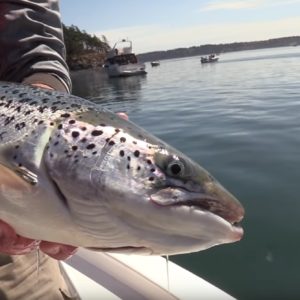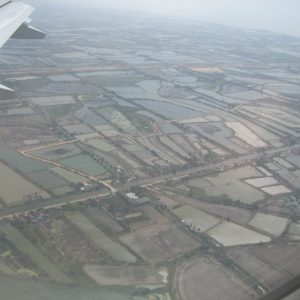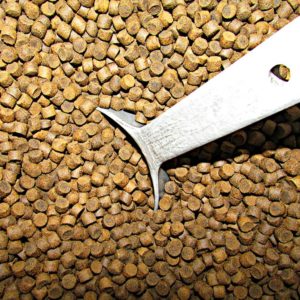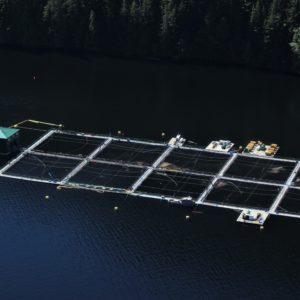Disease, Parasites and Chemicals
Farming systems that release untreated discharge into marine or freshwater ecosystems can pose a serious threat to wild fish, by transferring disease and parasites.
In Canada, open-net pen farming exists for salmon, trout, and small amounts of sablefish. Most of the known impacts of disease transfer into wild systems in Canada has been derived from open-net pen salmon farming, since untreated discharge often gets released into the ocean or nearby freshwater.
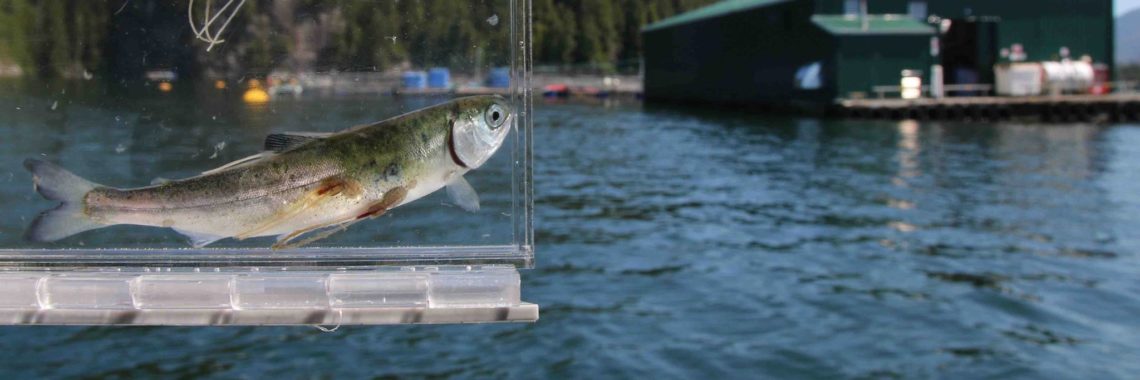
The Challenge
Pens with high densities of fish are inherently vulnerable to disease (viral or bacterial) and parasites (e.g. sea lice). When fish farms are located along wild fish migration routes, disease and sea lice transfer can occur to passing wild fish. Lethal impacts to wild fish populations from sea lice are well documented. Research into disease presence, transfer and impacts to wild salmon populations is ongoing. However, there are enough studies to cause serious concern about the potential risk salmon farms pose to wild fish.
A wide range of chemicals are used in aquaculture systems for various purposes, but they are usually applied for disease treatment and pest management. For open-net pen systems, chemicals which can affect wild marine species are inevitably released into the surrounding water.
The aquaculture industry’s use of chemicals to fight disease and sea lice is increasing globally. Disease management is one of the biggest concerns and constraints to the industry, costing billions of dollars each year, especially for farmed salmon and shrimp.
Pesticides
Pesticides, otherwise known as parasiticides, are used to kill sea lice in salmon farms. Some sea lice pesticides have been shown to be highly toxic to marine species, such as the Atlantic lobster. Overuse and reliance on pesticides has led to chemical resistance in sea lice and, as a result, has reduced the effectiveness of treatments in some regions.
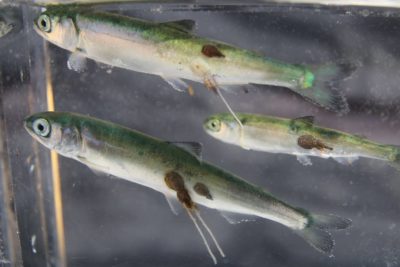
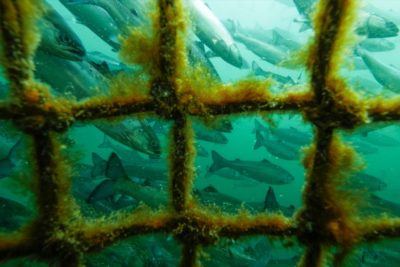
Antibiotics
Frequent antibiotic use by the aquaculture industry to control diseases contributes to increasing concern that antibiotic resistance will build in both farmed and wild species. Human health can ultimately be placed at risk by the indiscriminate use of antibiotics.
The Solution
Locating farm sites away from wild salmon migration routes can help minimize potential disease and parasite transfer. Incorporating non-chemical tools, such as effective fallowing periods2 and cleaner fish (a natural predator of sea lice), can help reduce dependency on pesticides. However, the only way to eliminate unnecessary risks to wild fish populations is by changing aquaculture methods and farming with land-based closed containment systems. Given the ‘closed’ nature of the system, disease events are greatly minimized and sea lice are not introduced into the tanks. Pesticides are not used, and antibiotic use is typically much lower. Most importantly, land-based closed farms ensure farmed and wild fish are physically separated.
There is a need to further our understanding of disease presence, interaction and impact both in farmed and wild fish species. This understanding is impeded by the lack of public access to farmed fish health data (both in Canada and abroad). A priority for the aquaculture industry should be the timely disclosure and transparency of fish health event reporting.
Other Aquaculture Sustainability Considerations:
- Competition and Interbreeding from Escapes
- Habitat Damage and Pollution
- Depletion of Wild Fish Stocks used in Feed
- The fallowing period is where farm production is paused for a period of time to reduce impacts on the benthic environment and as a tool for pest management (e.g. during periods of wild salmon migration past the farms).
- The fallowing period is where farm production is paused for a period of time to reduce impacts on the benthic environment and as a tool for pest management (e.g. during periods of wild salmon migration past the farms).
